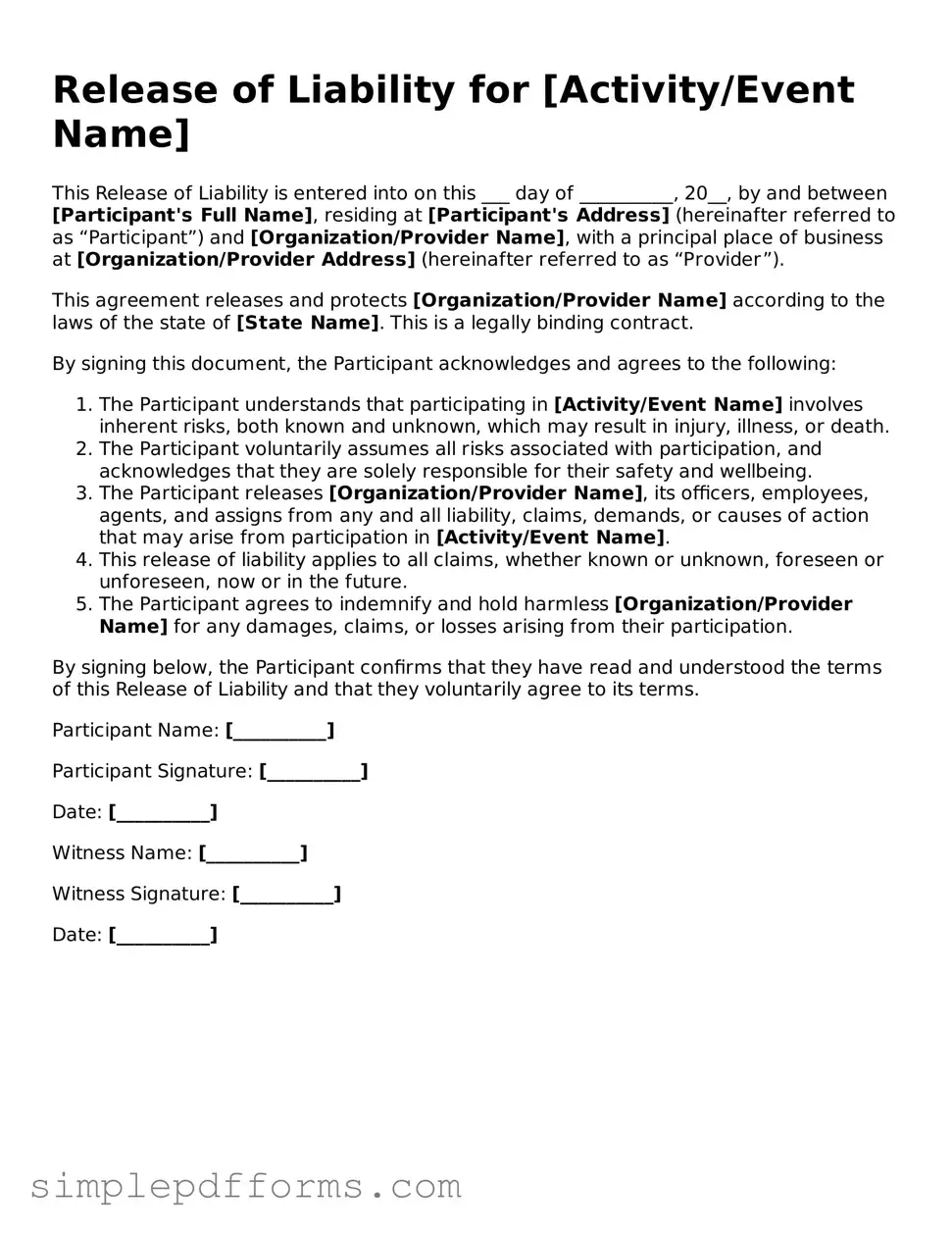Release of Liability for [Activity/Event Name]
This Release of Liability is entered into on this ___ day of __________, 20__, by and between [Participant's Full Name], residing at [Participant's Address] (hereinafter referred to as “Participant”) and [Organization/Provider Name], with a principal place of business at [Organization/Provider Address] (hereinafter referred to as “Provider”).
This agreement releases and protects [Organization/Provider Name] according to the laws of the state of [State Name]. This is a legally binding contract.
By signing this document, the Participant acknowledges and agrees to the following:
- The Participant understands that participating in [Activity/Event Name] involves inherent risks, both known and unknown, which may result in injury, illness, or death.
- The Participant voluntarily assumes all risks associated with participation, and acknowledges that they are solely responsible for their safety and wellbeing.
- The Participant releases [Organization/Provider Name], its officers, employees, agents, and assigns from any and all liability, claims, demands, or causes of action that may arise from participation in [Activity/Event Name].
- This release of liability applies to all claims, whether known or unknown, foreseen or unforeseen, now or in the future.
- The Participant agrees to indemnify and hold harmless [Organization/Provider Name] for any damages, claims, or losses arising from their participation.
By signing below, the Participant confirms that they have read and understood the terms of this Release of Liability and that they voluntarily agree to its terms.
Participant Name: [__________]
Participant Signature: [__________]
Date: [__________]
Witness Name: [__________]
Witness Signature: [__________]
Date: [__________]
